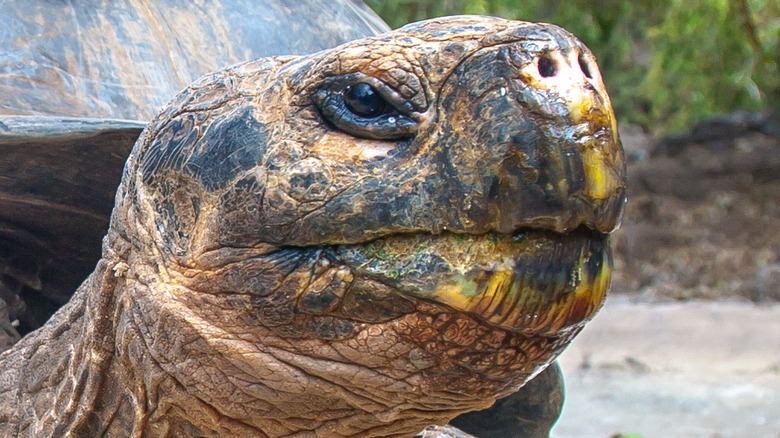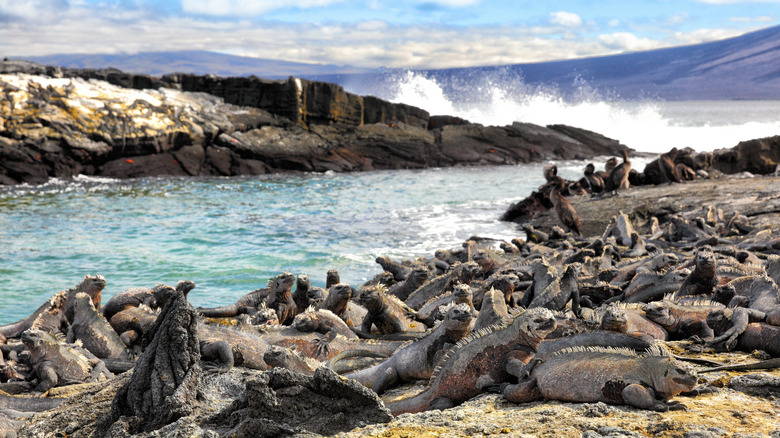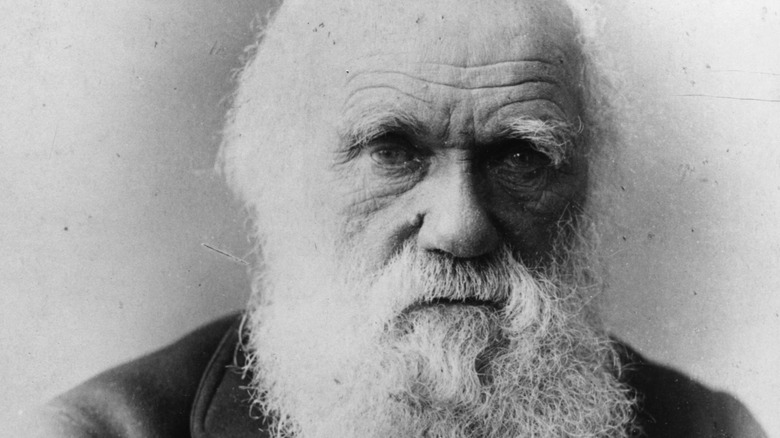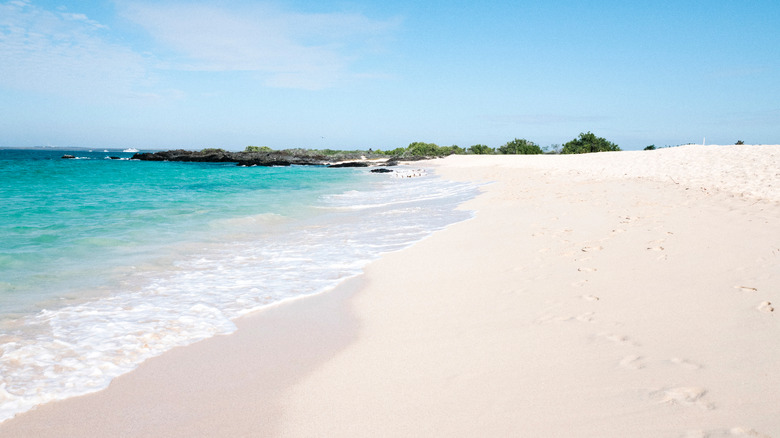How A Special Tortoise Found On The Galapagos Islands Just Shook Up The Science World
From the days of Charles Darwin — the acclaimed 19th-century British naturalist to whom the theory of evolution and natural selection is attributed — the Galápagos Islands, off the coast of Ecuador, have provided the world an opportunity to peer back through the millennia and see how and why certain animals change (via Britannica). In 2019, a rare giant tortoise was discovered on Fernandina Island, an even more remote spot in the chain due to volcanic activity. Dubbed the "Fernandina Island Giant Tortoise," scientists have now confirmed through DNA testing something about that animal that rewrites history, as The Guardian explains.
Due to the overall isolated nature of the Galápagos Islands, the environmental effect on species development is plain to see. Much of our modern-day understanding of the natural world is based on Darwin's work and the work of subsequent scientists as they studied populations of animals found there. Some of those animals live nowhere else on planet Earth, while others display unique adaptations to their isolated ecosystem, cut off from reproducing with other animals of their same kind, according to National Geographic. As those studies continued, scientists ventured onto the rugged Fernandina Island in 2019 and made an incredible discovery.
A rare giant tortoise was found
The giant tortoise discovered on Fernandina Island (pictured) was hidden in plain sight in a dense cluster of vegetation on an island made up mostly of solid lava. The creature uncovered by scientists was smaller than average and roughly 50 years old. Some giant tortoises live well over a century (per Go Galápagos), and most giant tortoises are not even considered mature until the age of 25, as National Geographic goes on to explain. Right away, scientists on Fernandina Island suspected they had something special. They believed that the creature they found on that day could be the sole survivor of Chelonoidis phantasticus, a species of tortoise believed to be extinct. The last one was spotted by American explorer Rollo Beck in 1906.
Without proof, the species of the female giant tortoise spotted on Fernandina Island could not be confirmed, and some scientists had their doubts. Notably, the shell just wasn't quite the right shape, as The Guardian notes. Nonetheless, some scientists remained hopeful that a living Chelonoidis phantasticus was uncovered. As Princeton scientist Stephen Gaughran — who worked on the recent study — said (via The Guardian), "Everything that we knew about this species said it was extinct." If the Chelonoidis phantasticus species of giant tortoise lived on long after the male discovered more than a century prior had died, it would revolutionize our understanding of the Galápagos ecosystem.
Giant tortoises were on the Galápagos Islands when Darwin arrived
When Charles Darwin (pictured) stepped from the HMS Beagle, the vessel on which he explored the world in the 1830s, he found an array of species on the Galápagos Islands, including giant tortoises and birds, among other types of animals. Observing distinct differences between what he found — sometimes from island to island or as compared to similar species found on other islands and continents — Darwin developed the theory of evolution and natural selection as he recorded in his most well-known book, 1859's "The Origin of the Species." Right away, Darwin began to catalog tortoises based on the shape of the shell and other defining characteristics of their appearance, as Galápagos Conservation Trust notes.
Since tortoises are not known to swim, it's likely they reached the Galápagos at some point in the ancient past by floating or were perhaps brought there by humans. Those populations were cut-off from reproduction with a broader gene pool, and so distinct characteristics developed over time, as The Guardian goes on to explain. Unfortunately, tortoises were seen by Darwin's crew primarily as a source of food, and many were killed and eaten. Today, all species of Galápagos tortoises are endangered. Unlike Darwin, the scientists studying the Fernandina Island Giant Tortoise had genome sequencing on their side. The findings of the research — which reveal whether the Fernandina tortoise is, in fact, the last living relative of a tortoise species long thought extinct — are now revealed in a study published by Nature.
The Chelonoidis phantasticus is not extinct
Comparing the genome of the 2019 Fernandina specimen against the 1906 tortoise discovered by Rollo Beck and DNA of other tortoises found on the Galápagos Islands and elsewhere, scientists have now confirmed that the Fernandina is, in fact, Chelonoidis phantasticus, and the species of tortoise is not extinct after all. A female with no known males to mate with on the island, more research is required to know if the Chelonoidis phantasticus might one day repopulate Fernandina or any other island in the Galápagos chain. Nonetheless, the discovery of a rare animal thought to have disappeared from the face of the planet bodes well for the delicate Galápagos ecosystem, as The Guardian reports.
An encouraging sign, footprints that could belong to a prospective mate for the Fernandina tortoise were found, but whether or not they belong to a male — or even to the same species — remains unconfirmed. On the news that Chelonoidis phantasticus is not extinct, researcher Michael Russello from the University of British Columbia, who was not involved in the study, said (via The Guardian), "These findings are extremely exciting from both evolutionary and conservation perspectives ... a comprehensive survey may be warranted to search for other individuals ... the species may yet survive." According to National Geographic, only 13 species of Galápagos tortoise are believed to exist.



